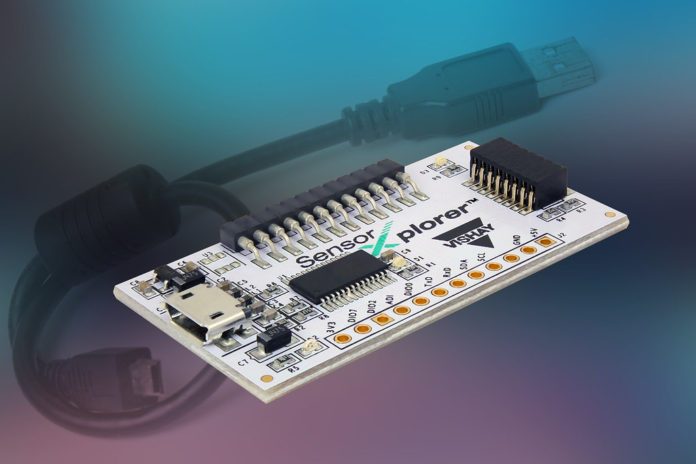As we see in our surrounding environment, we are using various types of sensors that detect some activities and present in various gadgets to catch and analyze what is happening in its surrounding environment. However, different gadgets are equipped with different variants of a particular sensor according to their collaboration with specific types of hardware(like processor, mainboard or motherboard or depends on other hardwares also).
Sensor
Sensor is a mechanical device which is used to detect some activities occurring in our environment and analyse them to identify the activities. Sensor detect some special inputs that is light detector sensor, speed detector sensor, mass analysis sensor, thermal power or thermal energy detect sensor etc.
How Sensors work?
Different sensors work and design in a different way. Like as human beings, they feel many things in the environment and respond according to them. Suppose someone tell anything to another person and that person is able to listen just because of his ear sensing organs are active and able to detect and react according to it. We can also say that sensors in any gadget is just like the various sense organs present in a human body or any other organisms.
Now technically, the sensor can be defined as a device which can be used to sense or detect the physical quantity like force, pressure, strain, light etc and then convert it into desire output like the electrical signals to measure the applied quantity. Most of the sensors can’t work independently like as T.V. remote sensor, A.C. sensors etc.
First Sensor was made in Berlin in 1991 and has been listed on the Frankfurt Stock swap since 1999. First Sensor was a specialist in developing customer-specific sensor solutions.
Examples of Sensor and their working
Now as we talk about sensing any transformation in any gadget’s surroundings, we require a specific sensor to sense a particular alteration. So, there are various types of sensors present here according to their work.
Sensors with their basic purposes
- Temperature Sensor– Used to detect any alteration in temperature.
- Proximity Sensor– Used to detect nearby things without any physical touch.
- Accelerometer(Sensor)– Used to detect velocity and or acceleration forces (static like force of gravity or dynamic like in smartphones to dense movement or vibrations).
- IR Sensor (Infrared Sensor)– Used to detect infrared wavelengths emitting objects.
- Pressure Sensor– Used to detect the pressure quantity applied on any object.
- Light Sensor– Used to detect the intensity of light and convert it into electrical energy or signals.
- Ultrasonic Sensor– Used to detect ultrasound energy(Categorised as transmitters, receivers, and transceivers.)
- Smoke, Gas and Alcohol Sensor– Used to detect leakage of smoke, LPG gas(or any other) and to detect alcohol vapours in a breathe of anybody(human) respectively.
1. Temperature Sensor

Temperature sensor is an electronic device which detects the temperature in our surrounding environment and give input in a mechanical machine as an input data to record, analysis what is the changes in environment’s temperature. Non-contact temperature sensors are usually infrared (IR) sensors.
There are four types of temperature sensors that are most commonly used in modern-day electronics:
- Thermocouples,
- RTDs (Resistance Temperature Detectors),
- Thermistors,
- Semiconductor based integrated circuits (IC).
Best temperature sensor:
Among the most popular temperature sensors, most are Thermocouples and Thermistors that have an operating temperature range of –40°C to 125°C, high precision and low voltage operation, low self-heating and large capacitive loads.
Top 10 best temperature sensor:
#10-TMP275AIDGKT by Texas Instruments

The TMP275AIDGKT supply measures temperatures from –40°C to 125°C, ±0.5°C purity from −20°C to 100°C, available in SOIC-8 and VSSOP-8 packages.
Average price across distributors at time of published: $1.85 USD.
#9-LMT70YFQT by Texas Instruments
The LMT70YFQT supply measures temperatures from −55°C to

150°C, ±0.36°C purity from −55°C to 150°C, 4-bump WLCSP (DSBGA) package.
Average price across distributors at time of publish: $1.57 USD.
#8-MCP9700A-E/TO by Microchip

The MCP9700A-E/TO supply measures temperatures from -40°C to +125°C, ±2°C purity from 0°C to +70°C, available in TO-92-3, SC70-5, SOT-23-3 packages.
Average price across distributors at time of publish: $0.27 USD.
#7-B57321V2103J60 by EPCOS

The B57321V2103J60 supply measures temperatures from -55°C to +125°C, resistance 10kΩ ±0.5%, 2-Pin 0603 & 0805 surface mount package.
Average price across distributors at time of publish: $0.18 USD.
#6-LM334Z by Texas Instruments

The LM334Z supply measures temperatures from 0°C to +70°C, ±3% initial, available in TO-92 package.
Average price across distributors at time of publish: $0.53 USD.
#5-NCP18WF104J03RB by Murata

The NCP18WF104J03RB supply measures temperatures from -40°C to +125°C, resistance 100kΩ ±0.5% (25°C), 2-Pin 0603 surface mount package.
Average price across distributors at time of publish: $0.09 USD.
#4-MAX6675ISA+ by Maxim Integrated
The MAX6675ISA+ resolves temperatures to 0.25°C, allows readings as high as +1024°C, 12-Bit, 0.25°C resolution, available in 8-pin SO package.
Average price across distributors at time of publish: $10.50 USD.
#3-MCP9700T-E/TT by Microchip

The MCP9700T-E/TT supply measures temperatures from -40°C to +125°C, ±4°C purity from 0°C to +70°C, available in SC70-5, SOT-23-3, TO-92-3 packages
Average price across distributors at time of publish: $0.21 USD.
#2-TMP36GT9Z by Analog Devices

The TMP36GT9Z supply measures temperatures from -40°C to +125°C, ±2°C purity over the −40°C to +125°C, available in TO-92-3, SOIC_8 and SOT-23-5 packages.
Average price across distributors at time of publish: $0.97 USD.
#1-DS18B20+ by Maxim Integrated

It is the best sensor because it has superior parameter range of detecting the temperature. The DS18B20 supply measures temperatures from -55°C to +125°C, ±0.5°C purity from -10°C to +85°C, 9-12 Bits, available in 8-Pin SO, 8-Pin µSOP, and 3-Pin TO-92 Packages
Average price across distributors at time of publish: $3.36 USD
2. Proximity Sensor:

A proximity sensor is a sensor capable to detect the presence of nearby objects or things without any physical touch. Proximity sensor often release an electromagnetic field or a beam of electromagnetic radiation and looks for changes in the field or return signal.
Common uses of Proximity sensor:
- Industrial usages
In Production automation machines that counts products and product transfers and also store record of all data to creating in these companies.
- Security usages
Detection of metal objects, armory, land mines, etc.
- Gadget usages
Detection of nearby presence of ear to the earpiece of a smartphone which decides its display to turn on or off.
3. IR Sensor (Infrared Sensor)

IR (infrared sensor) is used to detect infrared wave length i.e. wavelengths of 700 nano meter(nm). An infrared sensor is an electronic device, that produce in order to sense some changing aspects of the surroundings. An IR sensor can measure the heat or 700 nm wave length radiations of an object as well as detects the motion. These types of sensors measure only infrared radiation, rather than producing it that is called a passive IR sensor.
Infrared sensors are also capable of measuring the heat being producing by an object and detecting motion.
Can IR sensor detect human in darkness? IR sensor detect heat radiation or 700nm wave length and if a human is doing any work than they use energy in his body and using energy make human body to heat up and an IR sensor can easily detect the heat energy. However, most of the peoples use IR sensor in hunting because the body of animals have enough heat to get identified by an IR sensor in the darkness during night.
Does IR sensor work in dark? IR sensor is able to work in darkness Such sensors can work in the dark or inside the enclosure. Since the IR-LED is built into the sensor module, there’s no need for an external light source to measure the distance from the sensor to the object. But IR-based proximity sensor cannot work in dark environments.
Infrared Radiation Theory:
Infrared waves are not visible to the human eye because its wave length is 700nm and human eyes are not able to detect them. In the electromagnetic spectrum, infrared radiation can be found between the visible and microwave regions. The infrared waves normally have wavelengths between 0.75µm (micro meter (10^ -6)) and 1000µm.
The infrared spectrum can be split into near IR, mid IR and far IR. The wavelength region from 0.75 to 3µm is known as the near infrared region. The region between 3 and 6µm is known as the mid-infrared region, and infrared radiation which has a wavelength greater higher than 6µm is known as far infrared.
The Types of Infrared Sensors:
-
-
- Thermal infrared sensors
- Quantum infrared sensors
-
1. Thermal IR sensor:
They use infrared energy as heat. Their photo sensitivity is independent of the wavelength being detected. Thermal detectors do not require cooling but do have slow response times and low detection capabilities.
2. Quantum IR sensor:
For providing high detection performance and faster response speed we use these types of sensors. Their photo sensitivity is dependent on wavelength. Quantum detectors have to be cooled in order to obtain accurate measurements.
4. Light sensor:

The light sensor is a non-active device that convert this “light energy” whether visible or in the infrared parts of the spectrum into an electrical signal output. Light sensors are more commonly known as “Photoelectric Devices” or “Photo Sensors” because they convert light energy into electricity.
A light sensor is a photoelectric device that converts light energy (photons) detected to electrical energy (electrons). Seems simple? There is more to a light sensor then just its definition. It comes in different types, used in various applications and more! Hence, in today’s light sensor guide, we’ll be exploring all you need to know about light sensors:
- What are the types of light sensor?

Image credit: – wikipedia - What is a light sensor used for?
What are the types of light sensor? There are different types of light sensors available; mainly Photoresistor, Photodiodes, and Phototransistors.
- Photoresistors (LDR) Photoresistors.
- Photodiodes.
- Phototransistors.
What is a light sensor used for? Light sensor is majorly used to convert light energy to electric energy and in this way, we can create or transform a big amount of electric power. In darkness light is denoted as a power source (light power) and by using light sensor we can find the direction of power.
By reading this, you can easily make a blueprint and suppose an idea that how various sensors work in our daily lifestyle gadgets that we are using.


